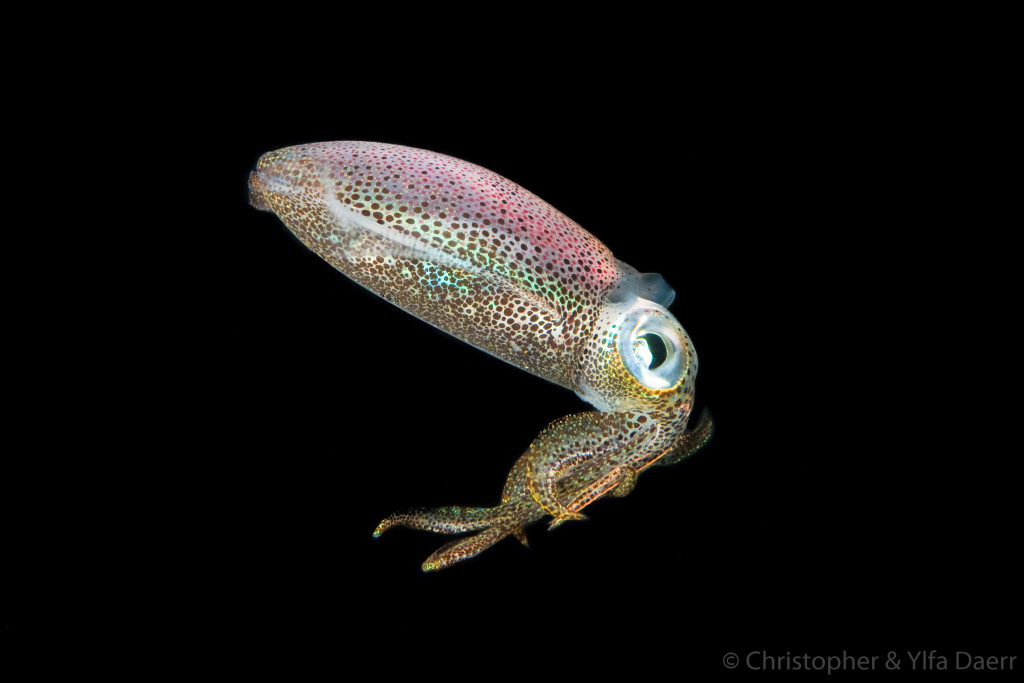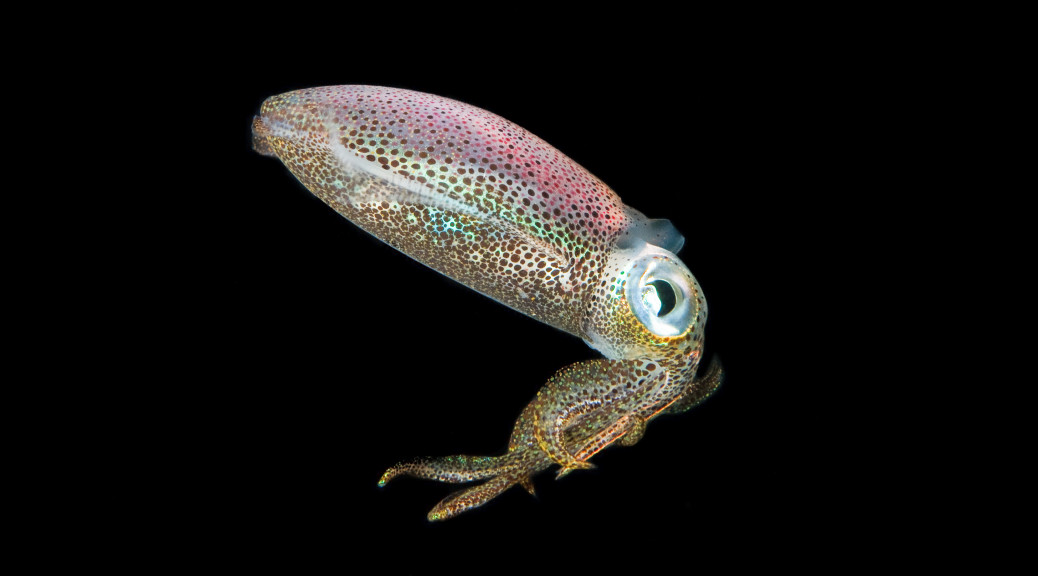Have you ever tried to take a still photograph of a squid? – I don’t mean the Calamares on the plate of your favorite restaurant for that matter…
If you have tried, you’ll probably agree, that it’s not an easy shot. First of all, squid are nocturnal animals. Second, they are quite fast moving. Worst of all, their moves are random for the casual observer – including myself, since I am not a squid-whisperer.
So how did I get this shot?

It’s been luck. — “Luck”, you ask? — Yes. I could tell you a story about how I calculated the perfect time and place. But this is blog is about the truth. So here is how this shot was taken:
We dove along a reef on the Philippines. It was a night dive and we were enjoying the whole night-life at the reef (not what some of you might be thinking right now…) It’s really amazing how the fauna changes during night. It feels like diving on a different reef, even if you know the site well during daytime.
Anyhow, I caught a movement at the peripheral angle of my eye. It was this squid. I had to reconfigure my flash setup, since I was on the hunt for ‘small stuff’. For night-dives I am just using the pilot light of my flash as ‘torch’. Nothing else. Scary? Not really. If you are an experienced diver and adventurous – try the following at own risk: Turn off all lights when you are in a safe spot (i.e. sandy ground right below you and no other hazards around). Then move your hands gently – or just look into the dark.
Since I didn’t have any red-light/-filter mounted on the pilot, the tricky part was to not scare the squid away by putting too much light on it. On the other hand – somehow the autofocus needed to work. So it probably looked quite funny, when I moved towards the squid, putting it into the light-beam, then retracting, checking the picture just taken, slightly re-configuring, moving forward again.
Don’t think you can do this forever with a squid though. First of all – these creatures are usually quite shy and don’t like light. Secondly. you’ll find it very hard to put focus on the squid – I promise. Last, but not least, they are gone at any slight disturbance.
If you want to share your squid photo-experience – comment on this page!
How did I get this near-perfect black background? Three things: First, I used f/14 – at night (!) – to provide enough depth of field to get the whole squid in focus plus allow for some ‘additional range’. Second, I put 1/100 sec, which honestly was at the limit of the squid’s movement speed – and I used ISO 200. Admittedly, I could have used a higher ISO rating, but at the speed of the scene – switching gear back-and-forth, I left the ISO where it was and rather focused on getting the shot.
Thirdly? Yes, here is the last ingredient of the secret sauce… Thirdly I retouched the background using Lightroom. There was simply too much sediment in the Philippine sea to not-be-captured using significant flash power for this night-shot. — I hardly use heavy background retouch, but for aesthetic reasons, I chose to do so on this picture.
Equipment used? DSLR full-frame, 100mm macro, 1 flash on medium-length arm.
Did it work out? What do you think?
